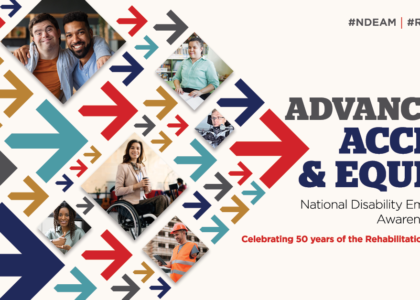In 1999, the United States Supreme Court made a landmark ruling in the case of Olmstead v. L.C., stating that unjustified segregation of individuals with disabilities is a violation of their rights under the Americans with Disabilities Act (ADA). This decision, known as the Olmstead Decision, has had a profound impact on the lives of people with disabilities and has become a cornerstone in the fight for equality and independence. In this blog post, we will explore what the Olmstead Decision entails and why it is important for people with disabilities.
What is the Olmstead Decision?
The Olmstead Decision was a result of a lawsuit filed by two women with mental disabilities, Lois Curtis and Elaine Wilson, who were living in an institution despite their desire to for inclusion in a community-based setting. The Supreme Court ruled that the unnecessary institutionalization of individuals with disabilities amounts to discrimination under the ADA. The decision held that individuals with disabilities have the right to receive services and support in the most integrated setting appropriate to their needs.
The decision focuses on five critical components for individuals with disabilities.
- Equality and Dignity: The Olmstead Decision emphasizes that people with disabilities should have the same rights and opportunities as individuals without disabilities. It recognizes that unnecessary institutionalization denies individuals their right to live with dignity and respect, treating them as second-class citizens. The decision affirms that individuals with disabilities deserve equal access to community-based services and supports.
- Community Integration: The Olmstead Decision highlights the importance of community integration for people with disabilities. It acknowledges that living in the community, rather than in institutions, promotes social inclusion, independence, and a higher quality of life. Community-based settings offer individuals with disabilities the opportunity to actively participate in their communities, engage in meaningful relationships, and access a wide range of services, education, and employment opportunities.
- Individualized Decision-making: The Olmstead Decision reinforces the concept of individualized decision-making. It recognizes that people with disabilities should have the right to make choices about where and how they receive services and support. The decision emphasizes the importance of person-centered planning, where individuals have control over their lives and can shape their own paths based on their preferences, needs, and aspirations.
- Compliance with the ADA: The Olmstead Decision reaffirms the principles and protections provided by the ADA. It clarifies that the ADA requires states to provide community-based services and supports to individuals with disabilities, ensuring that they have the opportunity to live, work, and thrive in the least restrictive environment possible.
- Systemic Change: The Olmstead Decision has sparked significant systemic change across the country. It has led to the development and expansion of community-based services and supports, as well as the reevaluation of institutional models of care. The decision has motivated states to invest in home and community-based services, fostering a shift towards a more inclusive and person-centered approach to disability services.
The Olmstead Decision Promotes Equality and Independence for People with Disabilities.
The Olmstead Decision represents a critical turning point in the rights and inclusion of people with disabilities. It reinforces the principles of equality, dignity, community integration, individualized decision-making, and compliance with the ADA. By recognizing the right of individuals with disabilities to live and receive services in the community, the Olmstead Decision has paved the way for greater independence, self-determination, and full participation in society. It stands as a powerful reminder of the ongoing efforts to create a more inclusive and equitable world for people with disabilities.





